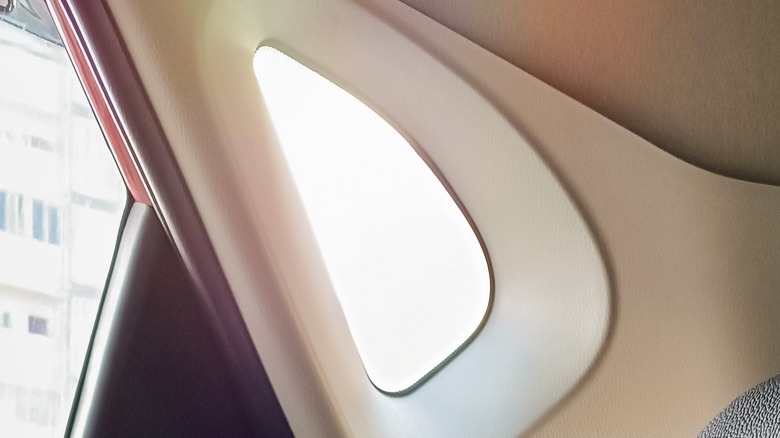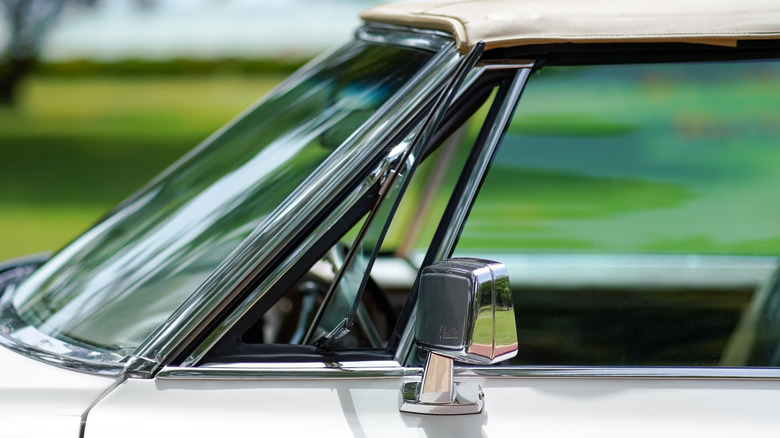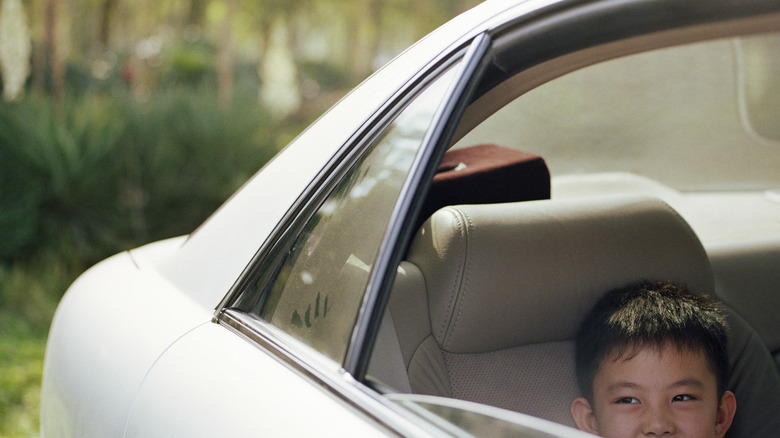What Is The Little Triangle Window In A Car Called? (And What It's For)
Relative to other aspects of modern vehicles, windows are pretty straightforward in their purpose and uses. They exist so you can get a good look at your surroundings while on the road without having to endure the worst the elements can throw your way. You can tint them at home or have them tinted by a professional, and you can open and close them at your leisure. There's not much more to them than that, though there is a bit of mystery and confusion surrounding a similar element. Many cars have small, often immobile windows in the back, front, or both sides of the vehicle that are, understandably, overlooked by most motorists.
So, what is the story behind this often triangular little window on so many cars? These go by several names, such as quarter windows, valance windows, and vent windows, which have been featured on vehicles of all shapes and sizes for decades. In the modern era, regardless of their placement, they're included as a means of increasing visibility. They tend to be placed around blind spot areas on the back end of cars to reduce this problem area, and nearby the side view mirrors to make them easier to see. For those in modern vehicles that actually do open, this is typically done with similar electronic controls to those of the other windows.
Visibility may be the current predominant purpose of quarter windows, but that wasn't always the case. Decades ago, these small mirrors served a different main purpose that ultimately gave them one of their multiple names.
What were quarter windows originally intended for?
On current cars, aside from their slight increase in visibility, quarter windows don't do much. As mentioned, they don't typically move up or down, and not all vehicles that have them come with the ability to open them. However, as it turns out, this wasn't always the standard. quarter windows rose to prominence in the mid-20th century to promote air flow inside the cabin of the vehicle, so it was pretty much a given that they could open up. They would do so for improved ventilation, requiring someone to unhook a latch and tilt the window outward manually, since electric windows had yet to become commonplace.
While there are some cars on the road these days that can open their quarter windows, this function has largely fallen out of fashion. One of the major reasons for this is due to the implementation and subsequent improvement of HVAC systems in cars. Air conditioning, the recirculation button, which is best used in certain situations, and general fan functions have come a long way over the past few decades, rendering quarter windows somewhat obsolete — especially since, if someone wants to drive with their windows open, they can just crack their larger ones a bit. Not to mention, it has been observed that quarter windows make cars less aerodynamic when opened, which can actually impact performance and fuel efficiency.
Even though they don't typically open anymore, and car air conditioning has taken precedence over natural air flow; quarter windows can still impact passenger comfort. Instead of letting in fresh air, it can keep some heat out.
Even unopenable quarter windows can keep out heat
It's a tale as old as automobiles themselves. It's summer, and your car has been all sealed up while you've been away. After hours of the sun beating down on your seats, they're scorching hot and nearly impossible to sit on, so you have to let the car air out or let the air conditioning run. This is even worse for those with dark or leather interiors, as they retain heat more effectively than cloth seats. Unless a sun shade is utilized or the car is parked in the shade, this effect is hard to avoid. At the very least, quarter windows can help in making your seats a little less unbearable to sit on.
With a little bit of help, they can have the effect of keeping your car a bit cooler than it would be otherwise. Even if they don't open, quarter windows can accomplish this by being tinted. Window tint is intended to keep out the solar energy that non-tinted windows let in, causing the car's interior to heat up without compromising visibility. If your quarter windows aren't already tinted, you could even do so yourself with some tint film. All you need to do is clean the windows being tinted, apply the film from the inside, and ensure it's attached to the window free of air bubbles. Alternatively, you could always leave tinting up to a professional since these small, oddly shaped windows can prove troublesome to tint.
As small and easy to overlook as they are, quarter windows are quite handy. They may not be as essential as they were years ago, but they still have their share of benefits.


